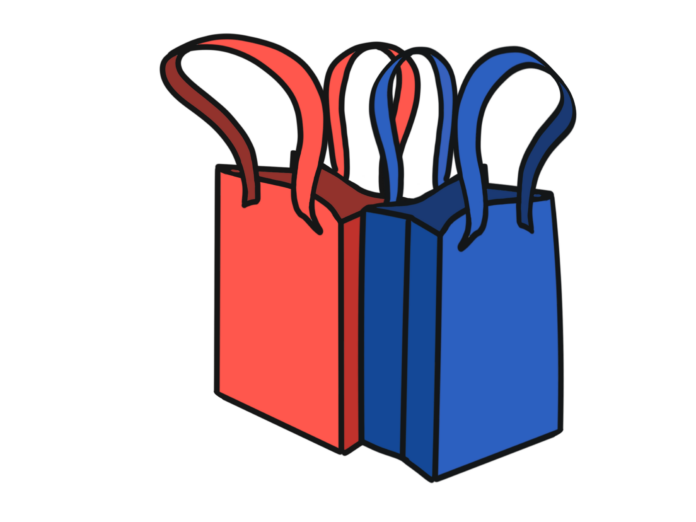What do you think the future of grocery shopping looks like? Post covid, some think it is grocery delivery via drones or automated instore assistants. I think a closer future of grocery shopping includes curbside pickup and reusable grocery bags. Reusable bags are the future because they are great for the environment. A UN study found that when reusable grocery bags are used for 50-100 trips then it will produce less harm then the one and done plastic grocery bag.
However, storing reusable bags can be ugly, frustrating and hard to remember to bring to each grocery shopping trip. Through my research, I found there is no good way for store associates and customers to use reusable bags for curbside pickup. I’ll be showing you how I came to this conclusion and what the next steps will look like. Let’s start with the beginning of a curbside pickup trip.
You’ll order your groceries online and schedule to pick it up in the afternoon. After you’ve finished the rest of your errands it’s time to go pick up your groceries. You have a couple bags in the trunk from your previous errands as well as some lawn chairs and sports equipment for the kids soccer practice. You pull up to the curbside pickup parking spot, open the trunk, and when the associate comes up to your window you say, “I hope all the bags will all fit in the trunk”. The associate says, “I’ll make it work”, then moves some items in the trunk before loading the bags.
This is an example of an encounter I observed during my ethnographic style research at a Kroger curbside pickup lot. I found this part of the curbside pickup journey the most interesting because it’s a direct interaction between the curbside associates and customers. I asked myself, “what are customers experiencing at the loading of groceries during curbside pickup?” “Are there factors of the process here that can be streamlined for the associate and customer?”

I took a deep dive into part time and full time users of curbside pickup through surveys, interviews, ethnographic style research, prototyping, and secondary research. According to my survey, 33 out of 42 curbside pickup customers said that they find curbside pickup very easy and convenient. Throughout my interviews, the most common reason for this was because the grocery store associates load groceries into customers’ cars.
However, some customers were frustrated with how associates packed the groceries into their car. Two of the customers I interviewed said they would both rather do the packing themselves because they like a specific organization of items in their trunk. Inversely, associates find loading groceries into customer trunks hard when there are other items in the trunk. Associates are tasked by the store to load groceries into trunks quickly while also being conscious of placement and stability of the bags to prevent damaged goods. A previous curbside pickup associate that I talked to mentioned that it was always harder to load groceries when the trunk already has large items in it.
7/12 customers that I interviewed, seasonally keep large items like lawn chairs, sports bags, or blankets in the trunk of their car. I found different ways that customers are accommodating for groceries while having large items in their trunk. One customer I interviewed said she moves items in her trunk to help give stability to the groceries. The curbside associate I talked to said he would usually ask customers if they wanted fragile groceries in the front seat so they do not get damaged by these large items. Another customer said he just jams stuff in the back and hopes everything is stable.

To gain a different perspective, I spent time observing people tailgating at an Ohio State game to see how they packed their trunks with all the food and other large items. Some had partitions between their food and outdoor equipment. Others had DIY setups built in the car to support the food. Most people were using their trunk space as extra storage for the large items like coolers, chairs, TVs, and electric generators. When packing up their tailgate, one side of the trunk would be dedicated to food and the other to the large items. This observation helped me understand that the trunk space of a vehicle is needed to secure and store food items and large items, simultaneously.
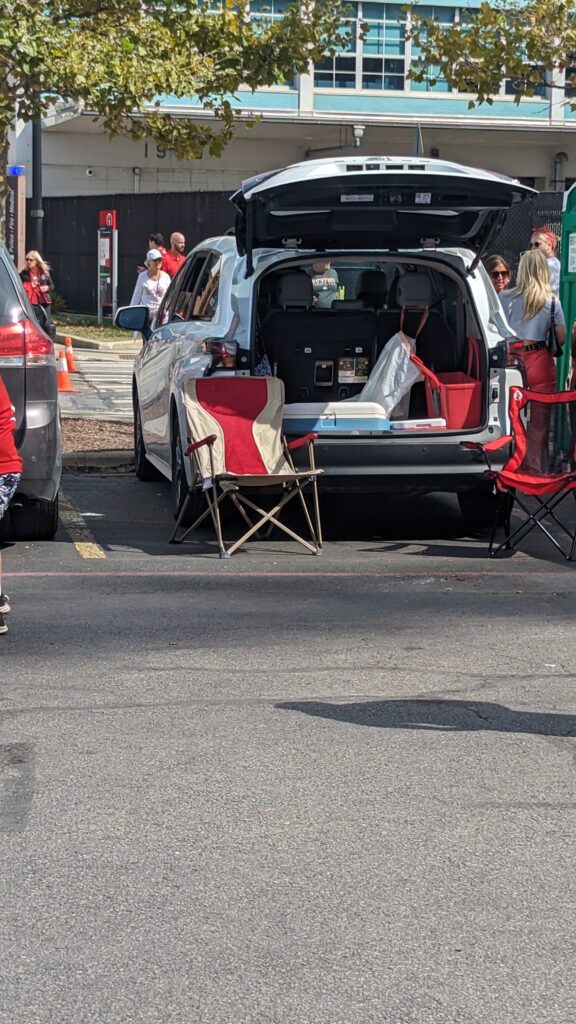
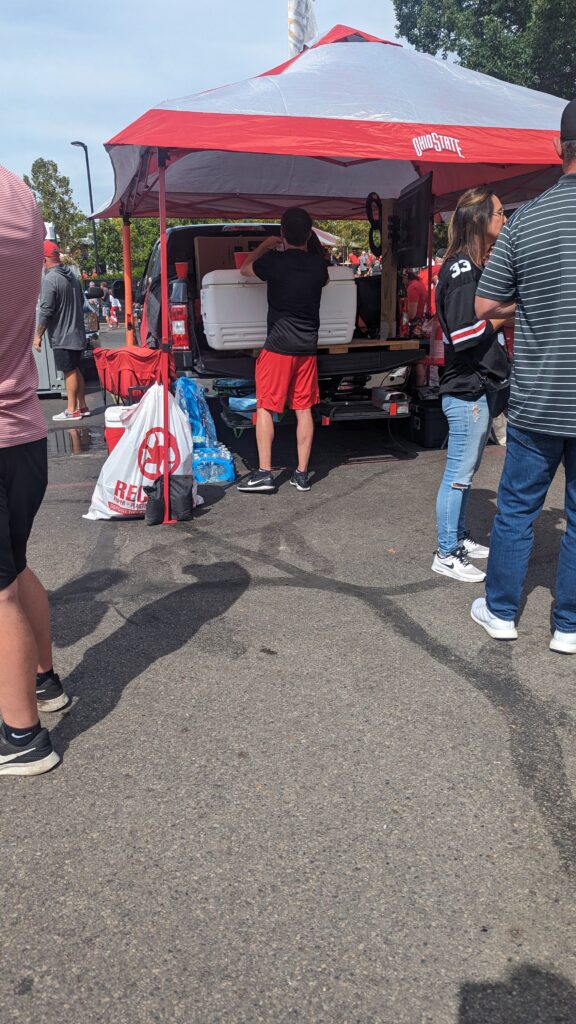

One of these large items customers keep in their cars are their reusable grocery bags. About half of the customers I interviewed, 6/12, said they store their reusable grocery bags in their vehicle trunk. Keeping the bags in their cars helps them not forget to bring the bags on the next grocery run. One in-store shopper I interviewed said storing reusable bags in the car is inconvenient because the bags are all different sizes and make the trunk look cluttered. She also said she would like it if the transfer of the reusable bags from her car to the store cart and vice versa would be easier.
So I asked the question, where are the reusable bags in the curbside pickup process? I noticed in my ethnographic style observation that customers can’t use their own reusable bags for grocery shopping. This is because the stores pack groceries in plastic or paper bags. Kroger specifically uses curbside pickup plastic bags labeled as such.
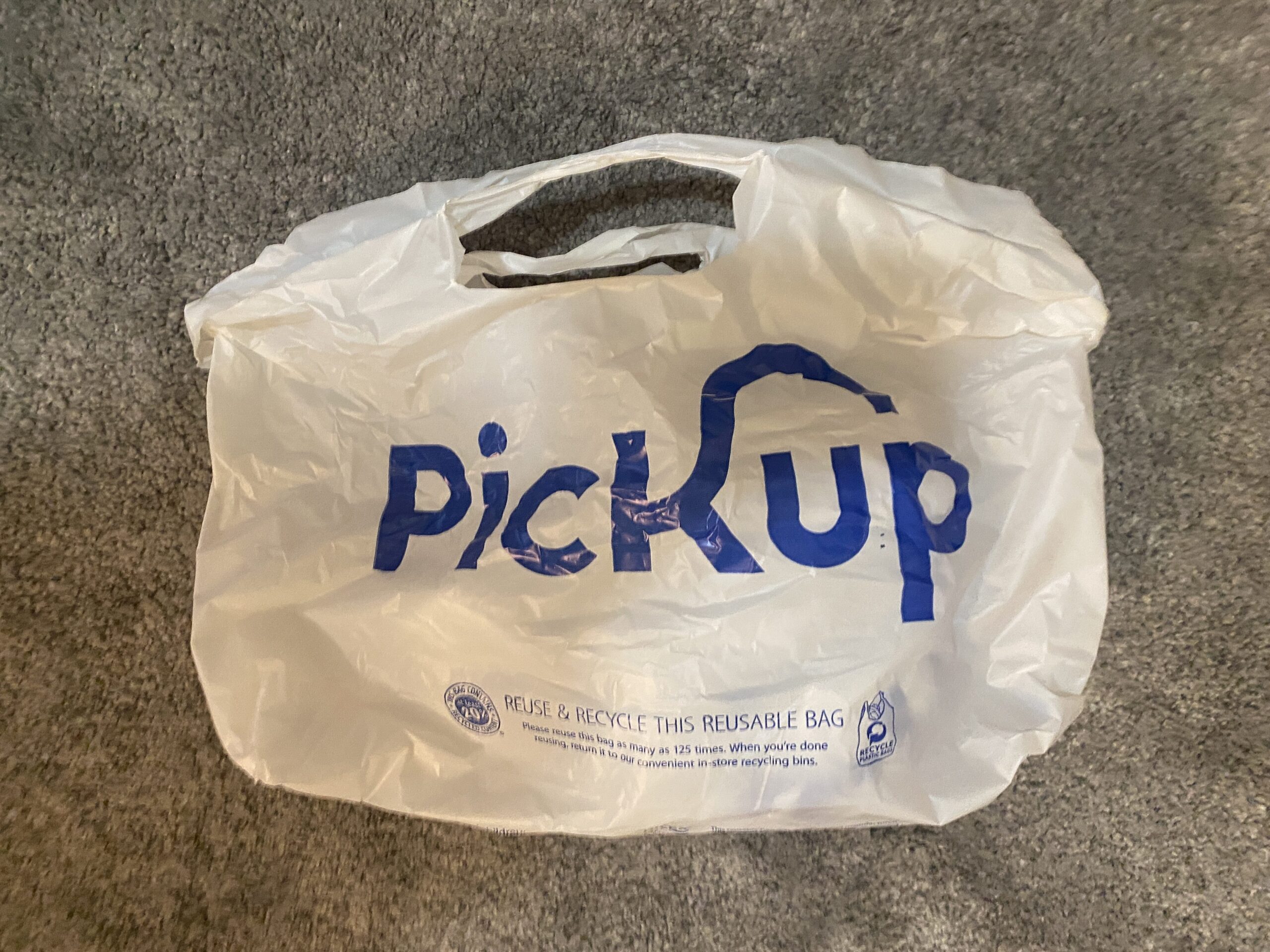
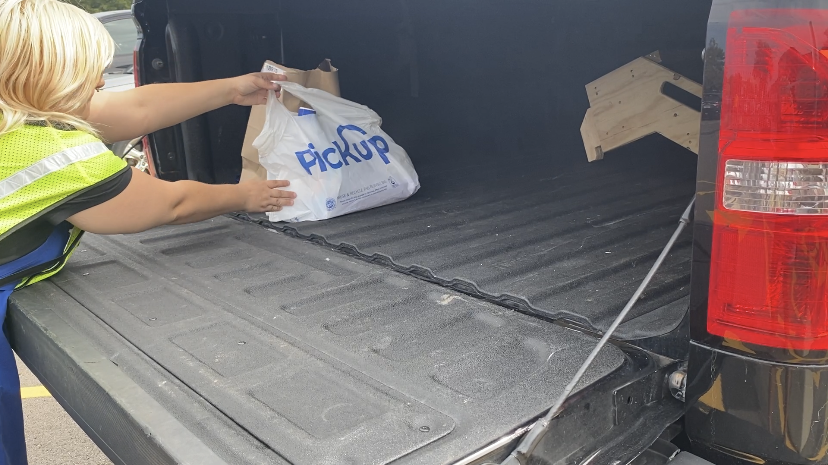
In 10 states in the US, there are full plastic bag bans, so customers have to use reusable bags or pay for paper bags. So when a customer from one of these states uses curbside pickup, they have to pay extra for paper bags they did not want or need. 11 A customer who lives in one of these states said that she would use curbside pick up more often if she didn’t have to pay for the extra bags. Also she said that the paper bags provided by Ralph’s, the Kroger equivalent in the west, usually break.
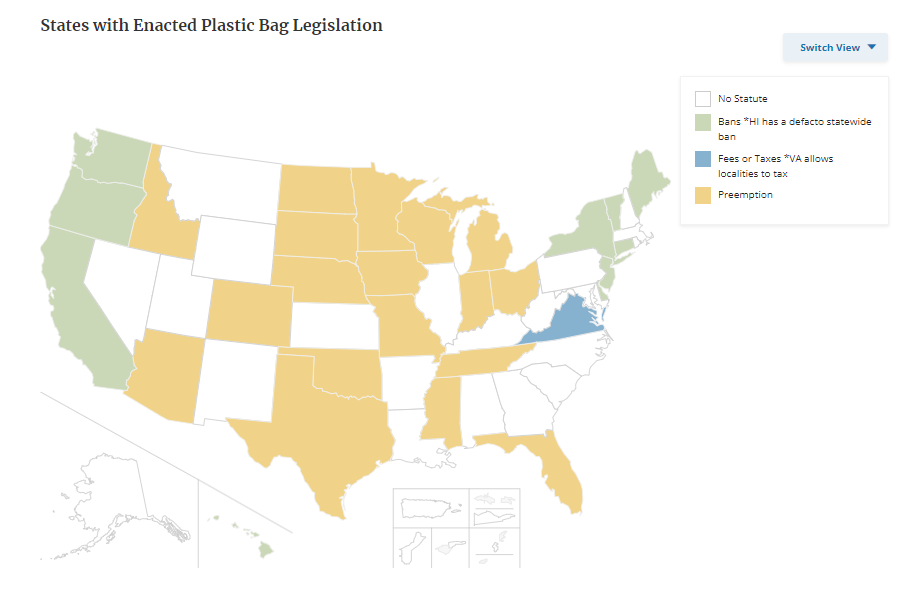
She said she would much rather use her own reusable bags, especially her favorite Trader Joe’s insulated bag. I wanted to explore if other customers had favorite reusable bags. A local curbside customer that I interviewed said she likes to use her own reusable bags when picking up groceries because they have wine bottle pockets. Another said he likes using his reusable bags because they are made of tough burlap and fold into a small pouch for easy carrying.
As I was learning about these points during my research, I went through some ideas of possible solutions. A couple examples include a personal assistant drone, a bag clip for carrying or a hitched cooler. I made sketches of conjectures that I came up with during my ethnographic style research and while reading through my secondary research. Some of these ideas are warranted to be called car accessories or added on. I searched the current market to see if things like this already existed and how well these products were received by customers.
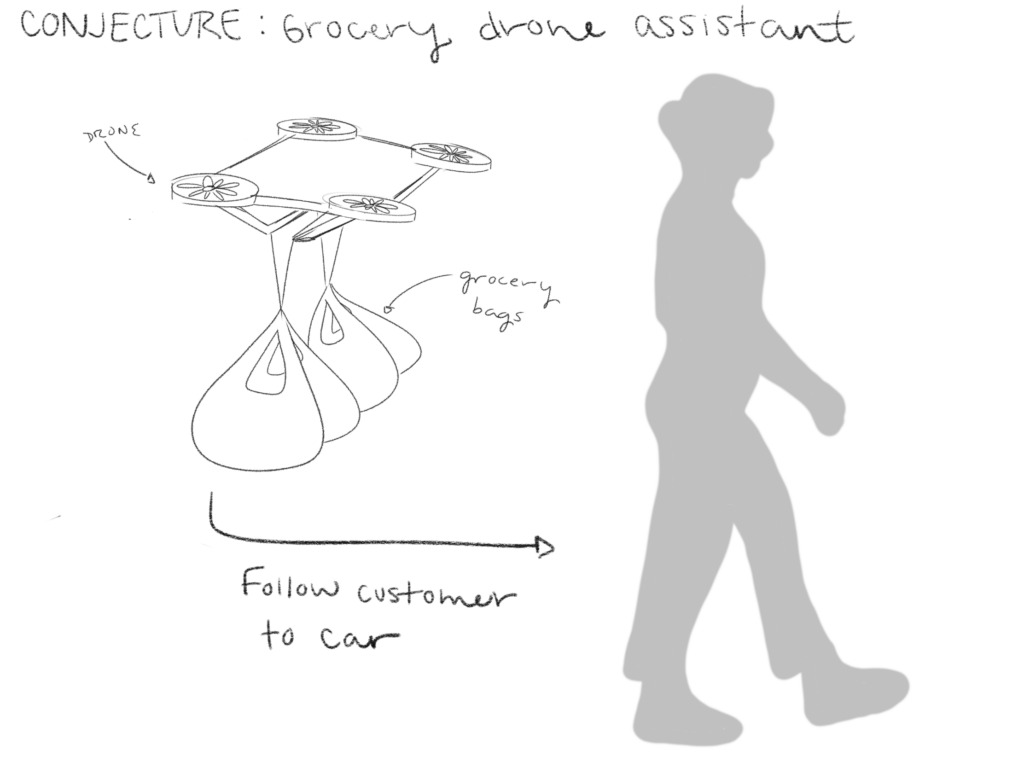
These concepts already were out in the market, either produced by car companies or other outside vendors. One of the curbside customers I interviewed said she uses a hook or clapse to help load and unload the grocery bags. She found that useful. However, other customers said it was not worth the extra money paid to invest in car accessories like an extra cooler. A majority of my interviewees said that car accessories are more harmful then helpful because they take up usable space in the car trunk.
So what are all the connections I made throughout my research? Customers are sometimes unsatisfied with how the associates pack grocery bags in their cars. Conversely, associates have said that it is harder to load groceries when customers have large items in their trunk. Customers cannot use their personal reusable bags when ordering from curbside pickup which can sometimes cost extra money in some locations of the US. Separate trunk accessories are not widely liked by current customers.
The overarching diagnosis is that customers can’t use their reusable bags for curbside pickup nor keep their reusable bags easily stored and separated from other items in their car. My general objective to address this issue is to integrate a system between customers and grocery associates that allow reusable bags to be used in the process of curbside pickup.
The primary stakeholders are customers of curbside pickup who want or need to use reusable bags. Secondary stakeholders are associates of curbside pickup. And the tertiary stakeholders are Honda car users and Kroger shoppers. My goal is to focus on the curbside pickup customer and how reusable bags in their trunk can enhance their experience.
Whatever I create, I want it to be movable, matches the style of Honda cars, is not a car accessory or add on is integrated into the car trunk and doesn’t act as an obstruction in the trunk. I’d like to approach these features by following the honda car style, focus on creating a containment system for reusable bags and as a bonus, to explore in this containment system can be be used by the curbside pickup associates.
My project development plan is to use the first 2 weeks as hardcore iteration and rough prototyping Once I have a couple rough prototypes, I’ll get through a first round of durability, modeling, and user testing. I want to do testing with digital or analog 3D models of a car trunk. I also want to call back some of the 12 people I interviewed to do hands on user testing. I’m planning to start the final sprint on my deliverables by the beginning of November to have everything done by the final week.
In conclusion, I want to make using reusable bags easier for all types of grocery shoppers. Lets help customers use reusable bags in a more manageable way so we can make the future of grocery shopping, today!

